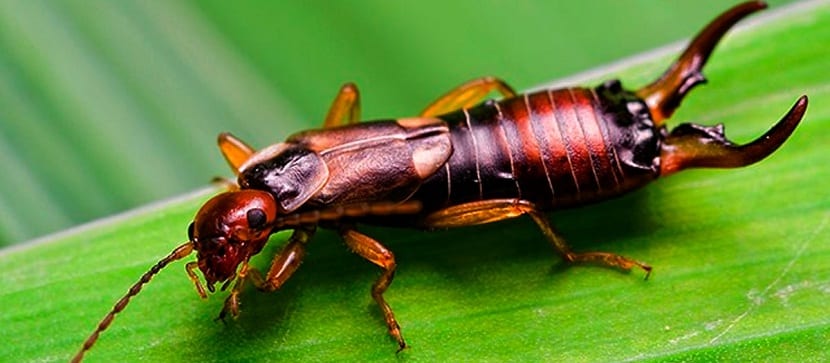
Today we are going to talk about a pest that attacks some plants in our garden and that it is dangerous to have it at home. It's about the earwig. It is also known by other common names such as scissors, cutters or cutters. These names are due to the shape of their body finished in clip or scissors. It is a pest that is not as famous as other garden pests because it is not as frequent. However, if you have it, it is quite dangerous and you have to act as soon as possible.
In this article we are going to tell you what the earwig is, what its life cycle is and what to do if you have a pest at home.
Earwig main characteristics
These insects can breed and live in your garden. At night, if they want food, they go into the house and look for it. They are omnivorous insects, so if you have too many, they could perfectly kill your crops or ornamental plants. As they are nocturnal insects that only look for food at night, it is more difficult for you to see them for yourself.
There is a popular belief that these insects can get into people's ears while they sleep. This is nothing more than a myth because, to date, there is no known reported case of these insects getting into the ears. It makes no sense when there is no food there. Another reason why these insects scare people is because of their appearance and those nasty claws. The pincers have them in the back of the abdomen and use it to capture food and other insects, both living and dead, to feed. They also use it as a defense mechanism in case someone tries to attack them.
In Spain there are 5 species of earwig. The size of each species varies, but on average they measure 1/4 inch. Its body is long, thin and has a pair of wings. Some of these insects can release a liquid whose odor is quite unpleasant for both insects and humans. They use this liquid to defend themselves against any other living being that tempts their life.
Similar to ants, this pest has pheromones that serve to massively group together and find each other. When the ants find food, they release the scent to be able to warn the rest of the companions to go towards it. The way to walk the line is because they follow the smell to the food found. In the same way, it can be said that the earwig is capable of using a similar technique.
Where to find it
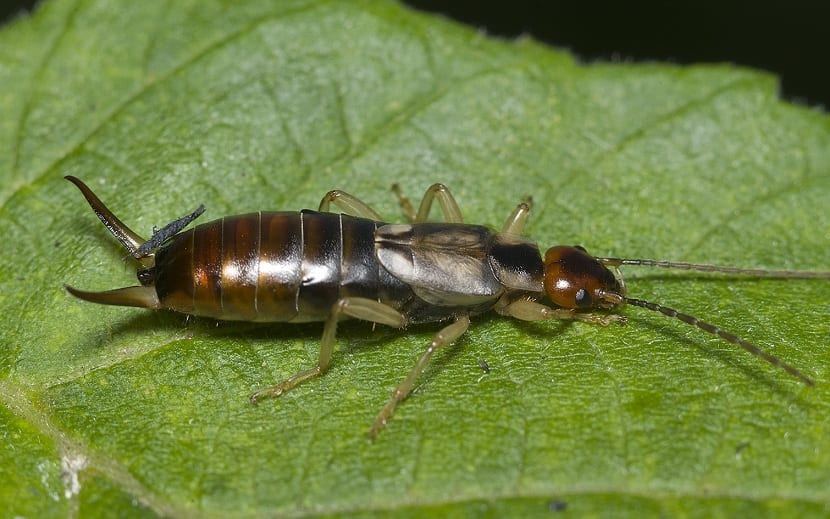
It is difficult to know where the earwig is since they are nocturnal and only come out of their hiding place to look for food. Immature earwigs (called nymph earwigs) are known to they don't have wings. It is the way to identify that they have not yet reached maturity. These types of insects, active at night, make it difficult for people to know that their home is being threatened by such an infestation. During the day they hide in areas where there is humidity. It can be any hole, any crevice, part of the wetter grass buried. In this way it is impossible to know if you have earwigs at home.
In general, if you have a garden, they will live in the lower part of logs and stones, in the sediment or layers that gardens have. This is where other insects and plants are also found.. The mouth clamps they have are used for chewing and allow food to be crushed very well before putting it in the mouth. It feeds both on live animals such as other insects such as rotting meat and vegetables. Their diet is omnivorous. On occasion they have been seen consuming companions of the same species. Therefore, it is an insect classified as cannibal.
Biological cycle of the earwig
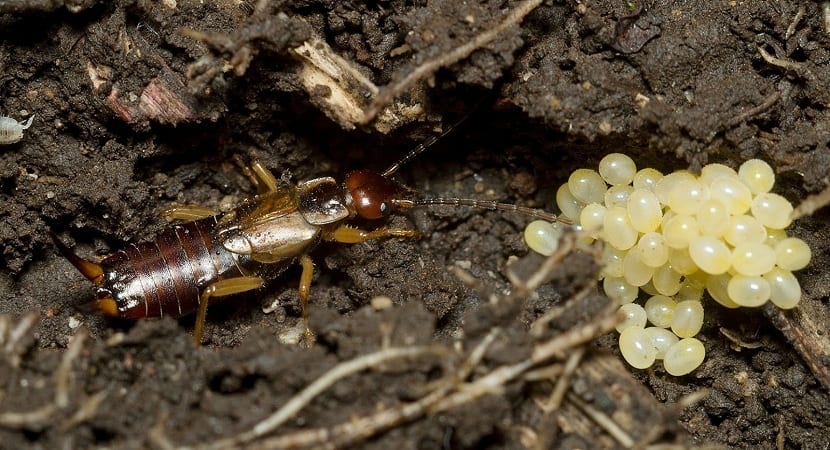
Of course, it is one of the pests classified as those that bite since if they can, they will. When they remain hidden outside the garden during the winter, they do so in small burrows that they build in the ground. During this stage, you don't usually know much about them. However, during the spring everything changes. The females are responsible for placing eggs in the burrows so that they hatch as soon as possible. The nymph earwigs need to feed on the food that the mothers bring them to the nests until they can go foraging themselves.
The male can be differentiated from the female thanks to the fact that he has a more arched and more powerful kind of fences. They are in charge of defending the burrow against any threat. The reproduction occurs oviparous and does not have a complete metamorphosis, since their young are very similar to adults.
The adults are mainly found during the months of July to October. When the cold arrives, the males prepare to die. However, the females must survive with the young to care for them so that they can survive. Finally die in June when the young are fully grown and the females are exhausted completely after their care throughout the winter.
Damages they can cause and how to eliminate them
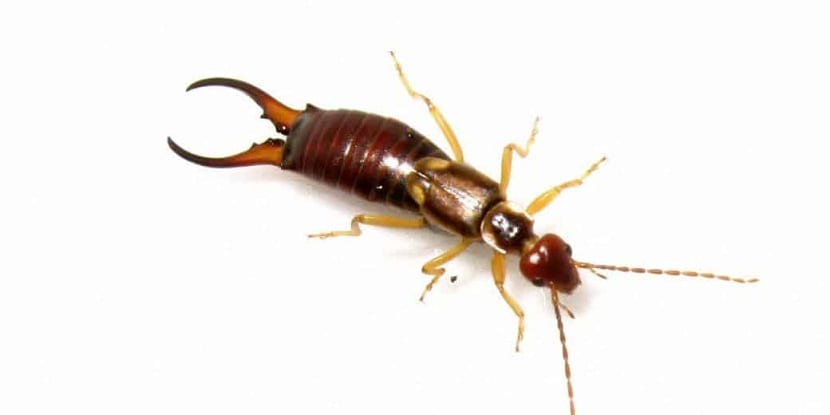
This pest can lurk in your home and cause various problems. Being difficult for humans to see, they may be causing damage without our knowing it. They go out into the gardens at night and it is very difficult to distinguish between plants. One way to see them is to attract them with artificial light. They are very attracted to them. When morning comes, they can be seen on objects in the patio or garden such as cushions (in which it would be a problem if we have children, since they can bite them if they feel threatened or try to catch them).
On the other hand, they will only enter the house if they want to look for food or change the weather and want to protect themselves from the cold. Once they are at home they will get in places where there is water such as laundry rooms, bathrooms or in the kitchen. They can be found practically anywhere.
The most indicated is call a fumigation company to take care of them or search their hiding places yourself and slaughter them on your own.
I hope that with these tips you know more about the earwig.
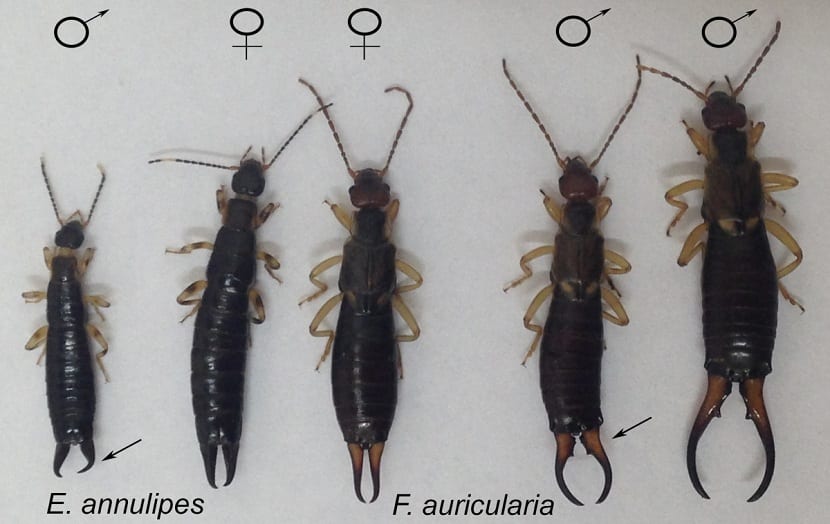
The first time I read that this bug is dangerous ... and it is said to slaughter them !!!!!!!!!!! What advice do you give ??? I'm not saying about bringing them to sleep with us in our room, but I always see them in the compost and they run away from me, not me from them. The tweezers use them to catch other critters but they do not do any damage since they do not have a sharp point. Bad, very bad note and not at all ecological and natural. Let the bugs live in peace. Atte Nicolas
Nicolás... it's good that they're only in your compost. In my case they enter my house having fumigated 2 times. In my bathroom, in my room, in my living room. In my dishwasher (wash 2 times). Etc. Understand that they are silver, not animals that you can raise. Do you have to love mice too? find out. Pests are harmful even to themselves. Everything to your measure.
Hello
I have a real infection with these bugs, the previous year I had seen them but they were not too many, this spring they became a plague, I only realized when I made a garden and the plants began to sprout, I thought that slugs were eating my plants but not , My surprise was great when when I went at night to see my little plants and I saw how these insects were devouring the leaves! They didn't leave me any plants. I really hate them and I don't know how to eliminate them. They are everywhere and an earwig bit my leg in the incle and it hurt more than the crest it chewed me with its tweezers! Now I am afraid, what can I do to eliminate them? I apply rait house and garden in the places that I know they hide, but it is not very effective. Is there any natural insecticide to spray them?
Hello Carol.
The best natural repellent is diatomaceous earth, which is a white powder made from algae which is composed of silica. This dust, when it comes into contact with the insect, pierces its body, so in the end it ends up dying of dehydration. They sell it for example here. You can also smear a little petroleum jelly on the base of the stems and trunks of the plants.
Regards!
Is it true that they eat aphids?
Q product removes them. Can they eat the inside of the baseboards on hardwood floors?
I live on the 10th floor and I have found one attached to my blind. Should I run?
Hello Federico.
If you've only found one, don't worry.
Greetings.
Totally agree with you.
Because they come into my house for food if there is no food at hand for them, and they have the whole field to eat the leaves and the insects or animals of the night. I don't understand. They can't find food in my house.
Please I need you to answer me.
Thank you